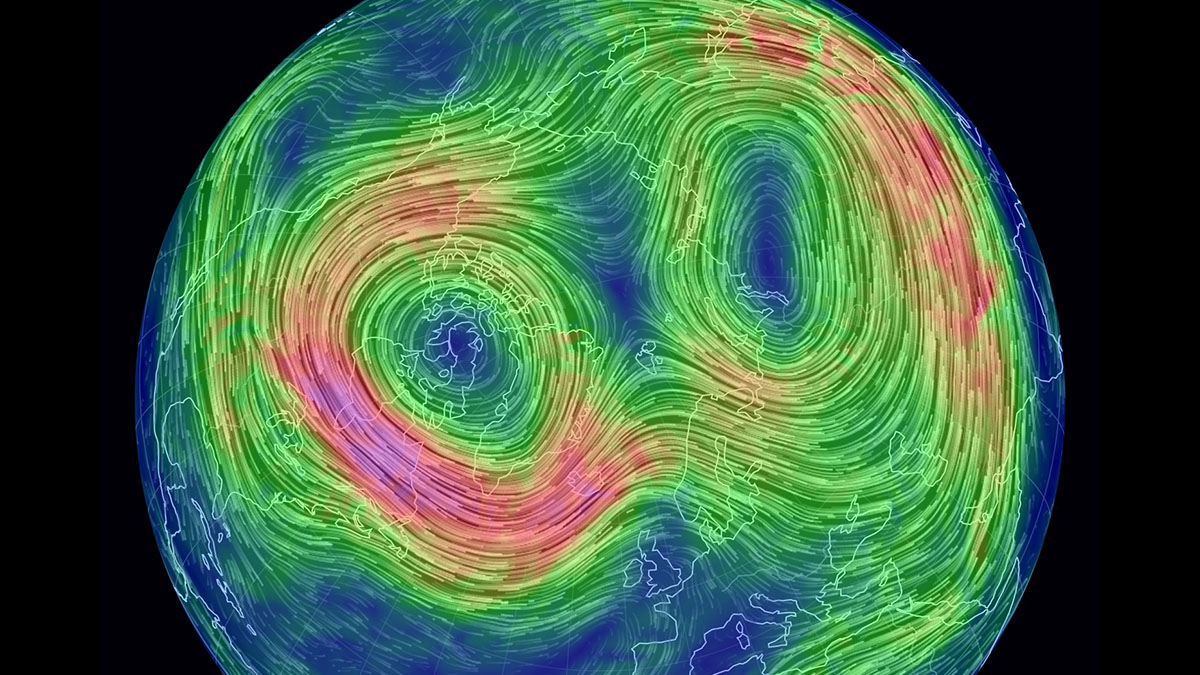why global warming is so cold: how climate change is breaking up the polar vortex

One of the most frustrating recurring talking points of climate change denialists is that the world can’t be warming if they’re cold. It’s basically playing peek-a-boo with global warming, only we all end up suffering in the process and millions of people face death from famine, disease, and war caused by the political instability it’s already triggering in fragile and failing states. And you can explain that global warming doesn’t mean that Earth will be tropical from pole to pole again, or that we’ll never see snow until you’re purple in the face, but all you’ll get is a condescending refrain along the lines of “yeah, yeah, everything’s caused by global warming to you libtards” because actually trying to understand how science works is for communists, apparently.
But all that said, over the last few years there have been seemingly perplexing cold blasts in the United States, Russia, and Europe. This year has been no exception as blizzards and icy gales hit Europe and the American Rockies and Great Plains. Like your local weather person probably told you, this is due to the polar vortex making its way down from the Arctic to deliver a cold uppercut, but shouldn’t the warming global climate stop it, or at least mitigate its effects? Well, according to climatologists, no. In fact, the loss of polar ice may be causing it to hit the Northern Hemisphere more often, a phenomenon that makes sense if you visualize the movement of air in the atmosphere like a kind of fluid.
Basically, as we lose sea ice, more heat is escaping from the oceans and disrupting a stable vortex of cold air usually centered over the Arctic, splitting it into multiple vortices which then send dense, cold air sloshing into lower latitudes and bringing cold gusts, ice, and snow with them. In other words, we get a brief taste of life at the top of the world for a week or two because less sea ice and warmer oceans are doing the equivalent of briefly exporting their weather systems. It’s almost like our planet wants to remind us exactly how bad winter can be in climate belts which are growing warmer and milder on average every year, though since it’s an inanimate oblate spheroid of rock covered by splashing liquids and gases, it definitely isn’t.
As we continue to lose sea ice, the polar vortex will keep becoming weaker and weaker because it’s created by the temperature and density differences between cold Arctic air and tropical air rising from lower latitudes, and contained by the jet stream high in the stratosphere. As those differences diminish, the vortex will keep on breaking and spilling into lower latitudes, creating cold snaps that last for weeks. Meanwhile summers will be hotter and dryer, and winters will be milder, just punctuated with harsh intrusions of ice and snow. While this contrast might seem paradoxical, it really isn’t. It’s just that our atmosphere consists of complex vortices and air currents across multiple climate zones, so it won’t react to warming uniformly.
See: Kretschmer, M., et al., (2018) More-Persistent Weak Stratospheric Polar Vortex States Linked to Cold Extremes, BAMS, DOI: 10.1175/BAMS-D-16-0259.1





